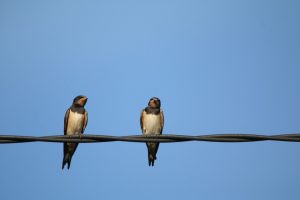 The swallows are back! The swallows are back. Yes. 6000 miles from Africa, and here they are, nesting in the roof of the loos at Porth. Incredible. I love hearing their chittering, and watching them swoop and loop, picking midges out of the air. So elegant and beautiful. Our local friends tell us that they have been nesting here for over 30 years.
The swallows are back! The swallows are back. Yes. 6000 miles from Africa, and here they are, nesting in the roof of the loos at Porth. Incredible. I love hearing their chittering, and watching them swoop and loop, picking midges out of the air. So elegant and beautiful. Our local friends tell us that they have been nesting here for over 30 years.
As we hear more and more often of the crisis that our wildlife faces, due to loss of habitat, changes in agricultural 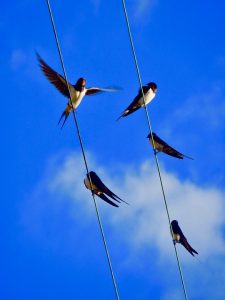 practice and climate change, their returning presence becomes all the more significant.
practice and climate change, their returning presence becomes all the more significant.
There will always be a place here for them to nest. The Trust pledges to protect our places, for ever, for everyone, and for me this includes the swallows. Our office and workshop will be moving from Porth this month, but the buildings will remain, and whatever their next use we will respect and protect our small shiny blue pals.
Keeping a close eye on wildlife is critical in looking after our countryside. Quality habitats need well-informed management. We need to know that what we do works. So May sees our annual spring bird survey. We look and listen across our patch (including St Anthony, Nare Head, the Dodman), to tally up as many bird species as we can find. It’s an opportunity to tune up our birding skills and have a good stomp out. This team has been counting different birds on the Roseland for over two decades.
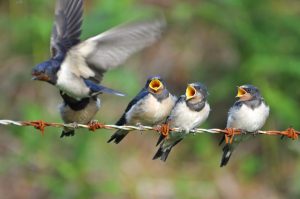 Swallows are always on the list. Some are easily spotted (you can’t go far without robin, blackbird and great tit crossing your path), most are noted by their singing. Once you tune your ear in to the ‘chif-chaf-chif-chaf’ of the chiffchaff they seem to be everywhere, and the same with the descending notes and flourish of the chaffinch.
Swallows are always on the list. Some are easily spotted (you can’t go far without robin, blackbird and great tit crossing your path), most are noted by their singing. Once you tune your ear in to the ‘chif-chaf-chif-chaf’ of the chiffchaff they seem to be everywhere, and the same with the descending notes and flourish of the chaffinch.
A new one for me this year was the cheery warbling melodies of the black-cap, bold and bright, on St Anthony’s Head.
The ‘a little bit of bread and no cheeeeese’ from the yellowhammer was a particular delight on a rather windy Nare Head 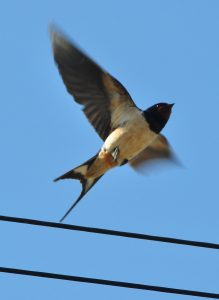 this year, and I love to watch the sea birds nesting on Gull Rock through the telescope; hundreds of guillemots, a few razorbills, and a smattering of cormorants and shags.
this year, and I love to watch the sea birds nesting on Gull Rock through the telescope; hundreds of guillemots, a few razorbills, and a smattering of cormorants and shags.
Although most of our British species are in decline (nationally sparrows, bullfinches and skylark numbers have halved in the past few generations), our counts have averaged 53 species every spring for the past ten years. This year was our highest count in 8 years at 60. Sparrows, bullfinches and skylarks all make the list and we’ll keep doing everything we can to make sure they always do.
I’ll be watching the swallow brood, grow and poo, and before long, fledge. Brand new blue birds, to return next year, and for every summer, forever.
If you would like to get involved and volunteer some time to our conservation projects here on the Roseland, please do get in touch with me jen.tyler@nationaltrust.org.uk

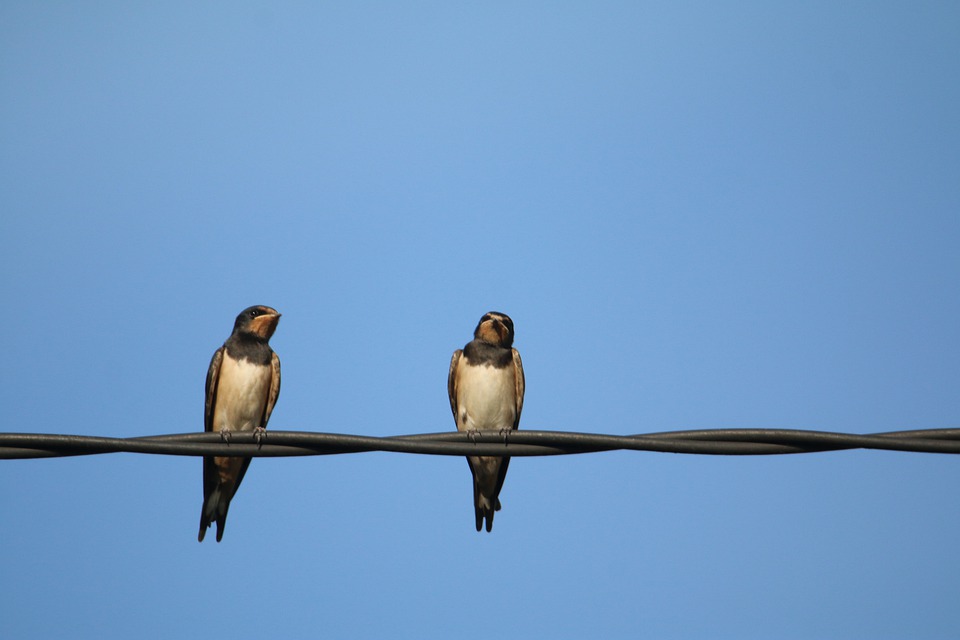
Great article , Jen. Thanks for sharing this with us.